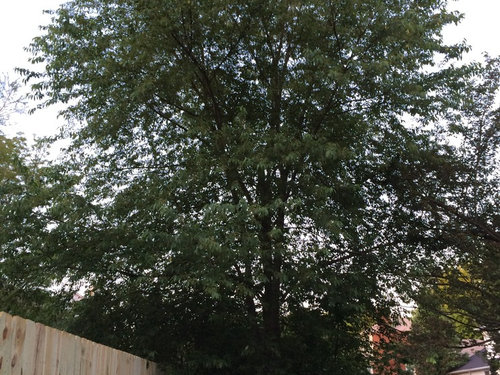Tree identification - help
mradcliffe
8 years ago
Featured Answer
Sort by:Oldest
Comments (18)
Related Discussions
Tree Identifications needed Help!
Comments (2)The first is sassafras. The star shaped leaf is Sweetgum, Liquidambar styraciflua....See MorePalm tree identification ? HELP
Comments (1)1st pic.Spindle palm.For sure.2nd.Possible bungalow palm.More close ups needed of 2&3....See MoreTree identification + help
Comments (0)Hi guys - I bought this guy at a greenhouse, but threw the tag away. Can anyone help identify this guy? Also, the brighter leaves have all grown since I purchased it, and are larger and shaped a bit different. Can someone explain why this has happened?...See MoreTree Identification Help
Comments (3)Good species as it lets a fair amount of light thru the leaves and the grass does well enough under it. Obviously heaving the sidewalk a bit, but any full-size tree will do that planted so close to it....See Moremradcliffe
8 years ago
Related Stories

WINTER GARDENINGHow to Help Your Trees Weather a Storm
Seeing trees safely through winter storms means choosing the right species, siting them carefully and paying attention during the tempests
Full Story
ORGANIZINGHelp for Whittling Down the Photo Pile
Consider these 6 points your personal pare-down assistant, making organizing your photo collection easier
Full Story
PRODUCT PICKSGuest Picks: Help Your Home Blossom With Floral Decor
Sprinkle hints of spring around your rooms with fabrics, wall coverings and more that recall nature's charms
Full Story
EXTERIORSHelp! What Color Should I Paint My House Exterior?
Real homeowners get real help in choosing paint palettes. Bonus: 3 tips for everyone on picking exterior colors
Full Story
DECORATING GUIDESSlow Design: Today's 'Wabi-Sabi' Helps Us Savor the Moment
Learn about the design movement that's aiming to satisfy our real needs, leaving materialism in the past
Full Story
EARTH DAYHow to Help Your Town’s Beneficial Birds and Bugs
Make a habitat using local materials to provide a home to the creatures that help our gardens
Full Story
MOST POPULAR7 Ways Cats Help You Decorate
Furry felines add to our decor in so many ways. These just scratch the surface
Full Story
HOUZZ TOURSHouzz Tour: A Modern Loft Gets a Little Help From Some Friends
With DIY spirit and a talented network of designers and craftsmen, a family transforms their loft to prepare for a new arrival
Full Story
LIFEDecluttering — How to Get the Help You Need
Don't worry if you can't shed stuff and organize alone; help is at your disposal
Full Story











Huggorm